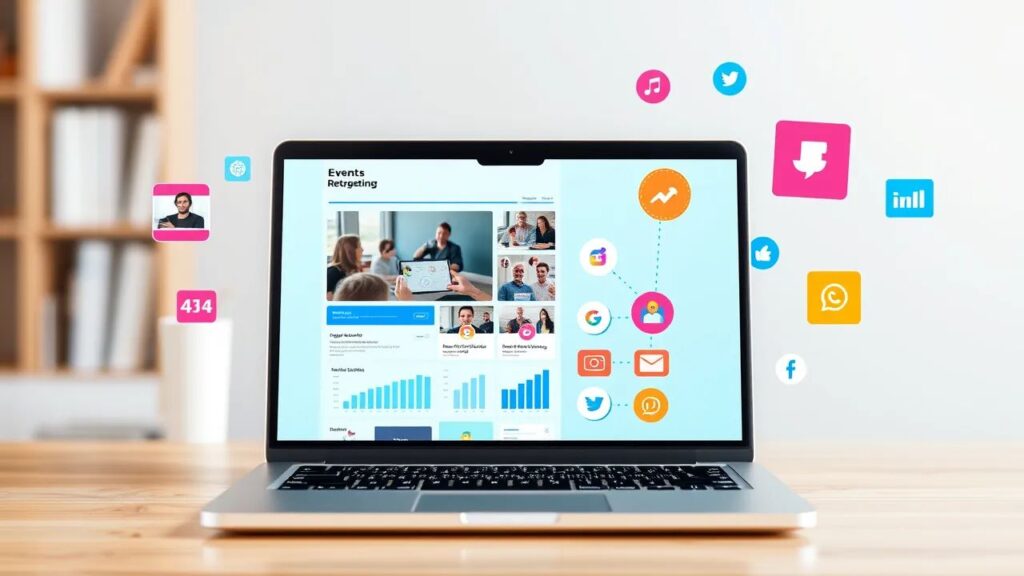
Planning an event is only half the job. The real challenge starts when you try to get people to show up. You send emails, post on social media, run ads, and hope for the best. But even after all that, some folks still don’t register. Others sign up but forget to attend. That’s where event retargeting comes in.
Event retargeting is not just another marketing trick. It’s a smart way to remind people, nudge them, and bring them back. Whether they visited your event page and left, or signed up and didn’t show, retargeting helps you stay in front of them. It’s like tapping them on the shoulder and saying, “Hey, don’t miss this.”
Let’s talk about how to use retargeting strategies for events in a way that actually works. No fancy words. No fluff. Just real tips you can use.
What Is Event Retargeting?
Event retargeting means showing ads or messages to people who already interacted with your event in some way. Maybe they clicked on your ad, visited your site, started to register, or even signed up but didn’t attend. You’re not chasing strangers. You’re talking to people who already showed interest.
This makes it more likely they’ll take action. They already know about your event. They just need a little push.
Why Event Marketing Retargeting Works
People are busy. They get distracted. They forget. Even if they liked your event, they might not register right away. That’s normal. Retargeting helps you stay in their mind.
Here’s why it works:
It’s focused: You’re not wasting money on random ads. You’re targeting people who already care.
It’s cheaper: Retargeting ads usually cost less than cold ads.
It’s timely: You can show ads based on behavior. Like if someone visited your page but didn’t register, you can show them a reminder the next day.
It builds trust: Seeing your event more than once makes it feel familiar.
So instead of starting from scratch, you’re building on what’s already there.
Audience Retargeting for Events: Who to Target
Not everyone needs the same message. You need to split your audience into groups and talk to each one differently. That’s how you get better results.
Here are the main groups to focus on:
Page visitors: People who visited your event page but didn’t register.
Abandoned registrations: People who started to register but didn’t finish.
Past attendees: People who came to your previous events.
Email subscribers: People who opened your emails but didn’t click.
Social media engagers: People who liked or commented on your posts.
Each group needs a different message. Someone who visited your page might need more info. Someone who started to register might just need a reminder.
Retargeting Strategies for Events That Actually Work
Now let’s get into the actual strategies. These are simple, clear, and proven to help with event remarketing.
Use Pixel Tracking
This is the first step. You add a small piece of code (called a pixel) to your event page. It tracks who visits and what they do. Then you can show ads to those people later.
Most ad platforms like Facebook and Google offer pixel tracking. It’s easy to set up and gives you the data you need.
Segment Your Audience
Don’t treat everyone the same. Split your audience based on behavior. For example:
People who visited but didn’t register
People who registered but didn’t attend
People who clicked but didn’t convert
This helps you send the right message to the right person.
Create Custom Ads
Your ads should match the audience. If someone visited your page, show them a reminder. If they started to register, show them a message like “Finish your registration.” If they attended before, show them what’s new this time.
Use simple language. Add a clear call to action. And don’t forget to include the date and time.
Use Email Retargeting
Email is still one of the best tools for event remarketing. You can send reminders, updates, and even special offers.
Set up automated emails for:
People who opened but didn’t click
People who clicked but didn’t register
People who registered but didn’t attend
Keep the emails short. Add a clear link. And send them at the right time.
Run Countdown Ads
As the event gets closer, run ads with a countdown. Like “Only 3 days left” or “Last chance to register.” This adds urgency and helps people take action.
You can also offer limited-time discounts or bonuses. Just make sure they’re real and not fake urgency.
Retarget After the Event
Event retargeting doesn’t stop when the event ends. You can retarget attendees with thank-you messages, feedback forms, or offers for the next event.
This helps you build long-term relationships and keep people coming back.
Event Marketing Retargeting Mistakes to Avoid
Even good plans can go wrong if you’re not careful. Here are some mistakes to watch out for:
Not using tracking: Without pixel or email tracking, you can’t retarget properly.
Sending the same message to everyone: People need different messages based on what they did.
Waiting too long: Retargeting works best when it’s fresh.
Using boring ads: Your ads should be clear, helpful, and interesting.
Ignoring mobile users: Most people use phones. Make sure your ads and pages work on mobile.
Fix these and your campaign will run smoother.
Mixing Retargeting with Other Event Promotion Tactics
Retargeting is strong, but it works best when mixed with other tactics. Don’t rely on it alone.
Use it with:
Social media posts
Paid ads
Email campaigns
Influencer shoutouts
Press releases
This gives your event more reach and helps you catch people at different stages.
Final Thoughts
Event retargeting is not hard. But it does need planning. You need to track your audience, split them into groups, send the right message, and follow up. When you do that, you get more sign-ups, better attendance, and stronger impact.
Retargeting strategies for events are not just about ads. They’re about building trust, reminding people, and making it easy for them to say yes. Whether it’s email, social media, or paid ads, event marketing retargeting helps you stay in front of the people who matter.
So don’t let interested people slip away. Use audience retargeting for events to bring them back and make your event a success.



